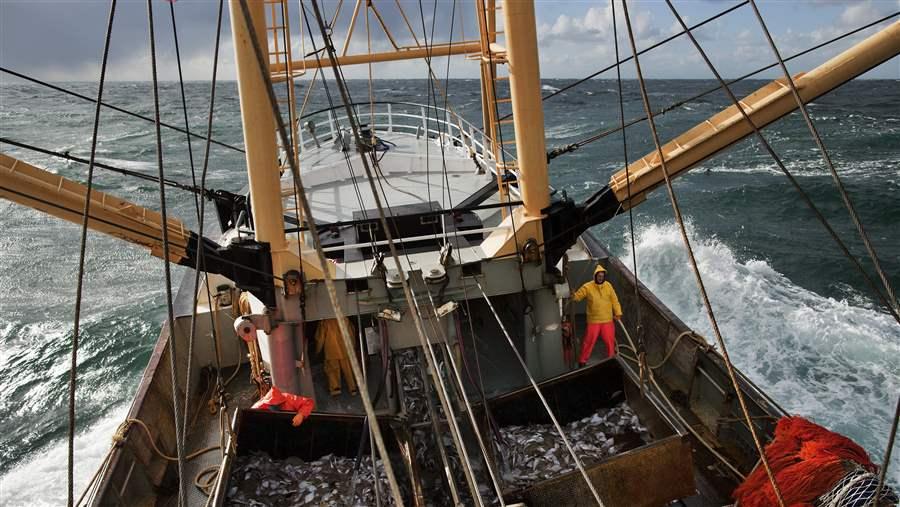Ending Overfishing in Europe's North-Western Waters
 Corey Arnold
Corey Arnold(Pobierz polską wersję tej informacji)
Fisheries management in the European Union entered a new era in 2014 when the reformed Common Fisheries Policy (CFP) came into force stipulating an end to overfishing in EU waters and the restoration of fish stocks.
For the previous five years, The Pew Charitable Trusts and 192 other organizations worked through the OCEAN2012 coalition to push for this ambitious legislation. That effort succeeded, but overfishing continues. Even as ministers were agreeing to rebuild fish stocks under the new CFP, they were deciding annual fishing limits which exceed scientific advice.
The reformed CFP must be swiftly and effectively implemented to achieve its aims. In particular, fisheries ministers must stick to the policy when setting fishing limits and advance sustainable fishing by 2015 where possible and on an incremental and progressive basis by 2020 at the latest.
To help ensure the CFP’s success, Pew has launched a campaign focused on ending overfishing in north-western European waters.
Why Europe’s north-western waters?
The European Union has the world’s third-largest fishing fleet and is the biggest importer and exporter of fish. It wields enormous influence over global marine policies, a status that has often encouraged the overexploitation of wild fish stocks through the EU’s lax implementation of the Common Fisheries Policy and continued overfishing in its exclusive economic zone and globally.
The heavily fished waters of north-western Europe can serve as a testing ground for implementation of the CFP throughout Europe and by EU vessels around the world. The region includes the North, Celtic, and Irish seas and the Atlantic Ocean west of Scotland and Ireland. These places are geologically diverse, ranging from the deep fjords and sheer cliffs of the westerly coastlines to the sandy beaches and wide, productive mudflats farther south.
For more than a century, the fish stocks in Europe’s north-western waters have been severely exploited. That has left many populations, such as cod, low or depleted, and has devastated numerous fishing communities that depended on these stocks for their livelihoods. In recent years, more than 40 per cent of stocks in the Atlantic and adjacent waters, where scientific data exist, were classified as being overfished.
The campaign
Historically, fishing interests intent on short-term goals have pressured EU fisheries ministers to set limits above the scientific advice, thereby sanctioning overfishing. The reformed CFP includes legally binding targets to end overfishing by 2015 where possible and by 2020 at the latest. The policy also aims to drastically reduce discards, the unwanted catch that has been thrown overboard.
In the coming years, Pew will campaign to have catch limits consistent with the goals of the CFP and ensure the effective implementation of the discard ban. To this end, we have joined several advisory councils set up to provide recommendations to Member States and the European Commission on implementing the CFP. We are collaborating with stakeholders, advocating solutions and stimulating the engagement of concerned citizens to encourage decision-makers to end EU overfishing.
Our goals
To support effective implementation of the reformed CFP, Pew is working to:
- End overfishing in Europe’s north-western waters by advocating that EU fisheries ministers set catch limits that enable stocks to recover to, and be maintained at, sustainable levels.
- Minimize the negative effects of fishing on the marine environment by promoting an ecosystem-based fisheries management approach in European waters.











